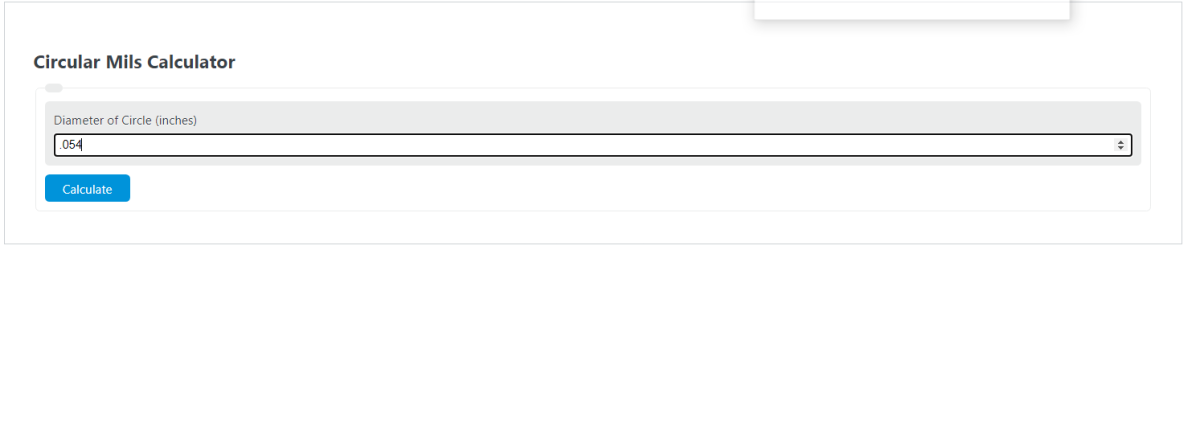Enter the diameter of a circle into the calculator to determine the area of the circle in circular mils.
Circular Mils Formula
The following formula is used to calculate the area of a circle in circular mils.
A = (pi*D^2 / 4) / (7.854*10-^7)
- Where A is the area in circular mils (cmil)
- D is the diameter of the circle (inches)
What is a circular mil?
Definition:
A circular mil is defined as the area of a circle whose diameter is one mil. One mil is equal to one-thousandth of an inch or .0254mm.
The area of a circle whose diameter is one mil is equal to .7854 mil^2 = (7.854*10^-7) in^2.
How to calculate circular mils?
Example Problem:
The following example problem shows how to calculate the area of a circle in circular mils.
First, determine the diameter of the circle. In this case, the circle has a diameter of .054 inches.
Next, calculate the area of that circle. Using the formula for the area of a circle, this is calculated as: A = (pi*.054^2 / 4) = 0.00229022104
Finally, divide the area above by the area of a circular mil.
A = (pi*D^2 / 4) / (7.854*10^-7)
A = .00229022104 / (7.854*10^-7)
A = 2916 circular mils
FAQ
What is the significance of calculating area in circular mils?
Circular mils are particularly significant in electrical engineering, where they are used to calculate the cross-sectional area of wires and cables. This measurement is crucial for determining the wire’s capacity to carry current without overheating, ensuring safe and efficient electrical installations.
Can the formula for circular mils be used for any size of circle?
Yes, the formula for calculating the area of a circle in circular mils can be applied to any size of circle, as long as the diameter of the circle is known and is measured in inches. This formula provides a direct way to convert the circle’s diameter into its area in circular mils, which can be useful in various applications beyond electrical engineering, such as in construction and manufacturing.
Why is the diameter used in the formula instead of the radius?
The formula uses the diameter of the circle because a circular mil is defined based on the diameter of a circle (specifically, a circle with a diameter of one mil). By using the diameter directly, the formula simplifies the calculation process. However, since the diameter is twice the radius, the formula could be adapted to use the radius instead, but it would require adjusting the formula to account for this difference.
